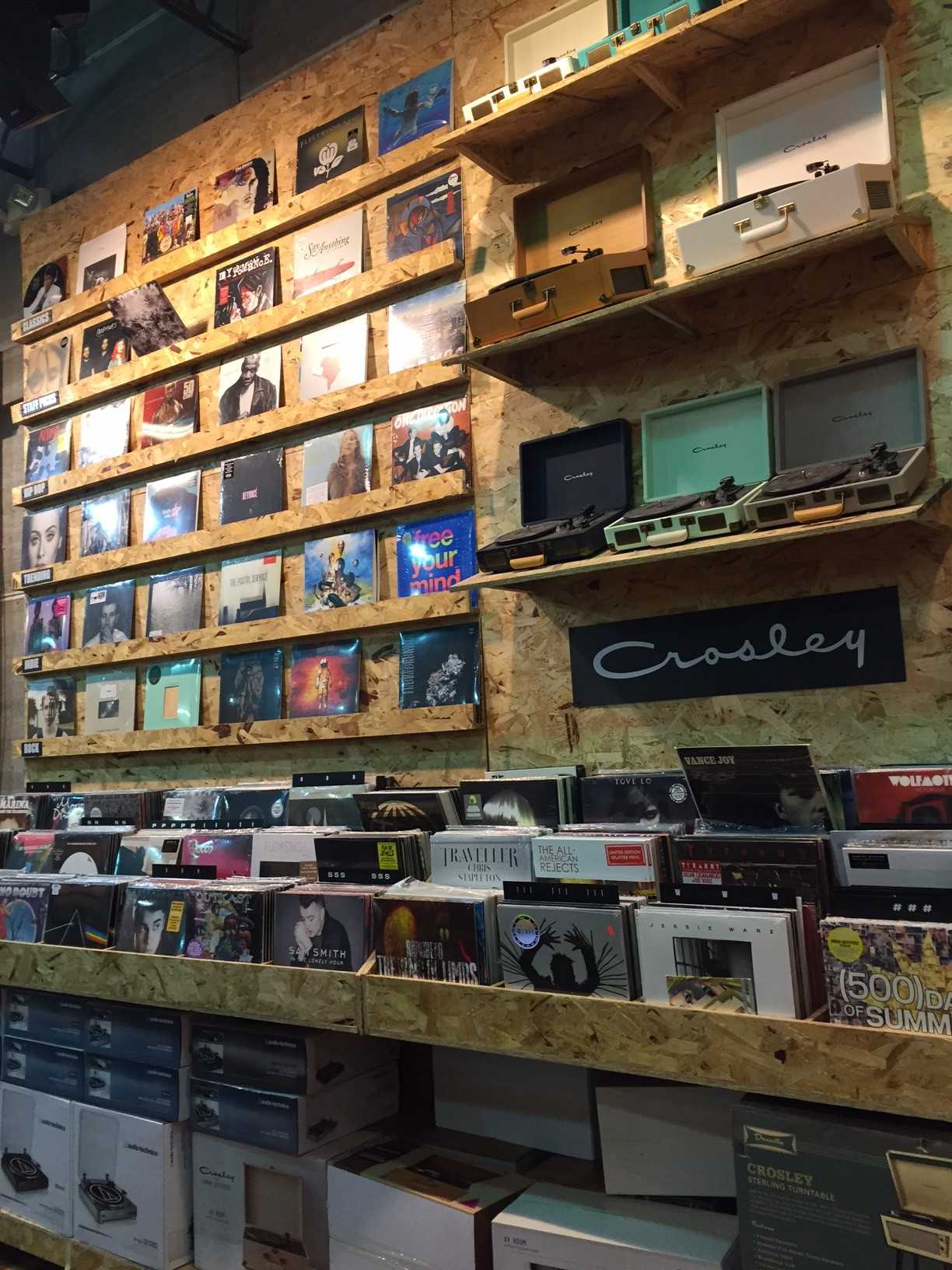Out with the new, in with the old
March 22, 2016
Late on a Sunday evening, a teenage girl sits upon her bed, doodling in her journal. Her pair of Chuck Taylor Converse sneakers rest in the corner, Polaroid photographs of family and friends are pinned to a tack board and a copy of The Beatles’ 1966 LP Revolver plays quietly on the turntable beside her.
But something is off–the year isn’t 1966, it’s 2016.
A scenario like the one described is becoming common in today’s culture, so what makes today’s youth so obsessed with the past? Trends have faded in and out of style before, but a resurgence like this seems bigger than ever–entire markets have been revived to cater accordingly. Independent record stores are back in business, thrift stores are bustling and major corporations are gearing their advertisements towards the characteristics of a past generation.
Hints of vintage influence can be found in everything from Instagram filters emulating the grainy “film” look, to Taylor Swift’s 1989 album cover featuring the artist candidly snapped on a Polaroid photograph to the Pink Floyd and Led Zeppelin t-shirts on sale at Target.
The 21st century has been full of technological advancements and ease of access, and it would be a fair assumption that the ways of the past have been left for good. But there seems to be a growing interest in a return the physical, hands-on and highly saturated view of life of the ‘60s, ‘70s and ‘80s.
Large companies like Urban Outfitters are catering to the masses of today’s generation and have successfully turned the old fashioned into “cool” again.
Freshman Ali Deltoro embraces some of these revived aspects and has an appreciation for the simple, physical aspect of entertainment like vinyl records and Polaroids.
“It has a lot to do with being simpler, especially with records. It’s more straightforward than our phones are for playing music. And the are hand-held things that I just think are a lot cooler and more interesting,” Deltoro said.
For better or worse, foreign technology has fallen into the hands of the teenagers of today, and it is questionable how they are handling and implementing it into their own culture. Is a revival really necessary if the people are unaware of how to use them?
Junior Cole Eckholm said he would argue that the return of vinyl records is more of a status symbol among most teens and not much more.
“A good sum of the kids who own record players got them because they wanted to ‘fit in’ and say ‘I don’t even know what this does, I just know it’s cool and it’s a thing that makes music,’” Eckholm said.
Some are fascinated and welcome the return of vintage trends, while others balk at it. There is a delicate line drawn between being “cool” or “fashionable” and actually having a legitimate interest in the past. Among today’s youth, both are true. It is possible that members of today’s generation follow these specific trends just because they have a significant presence in pop culture. Likewise, many parents of young adults today originate from the ‘60s, ‘70s and ‘80s, who spread their cultural identities to their children and now pick up on the same trends.
To better understand behaviors like these in today’s society, it is helpful to take a look backwards to how the generation before this one behaved.
NNHS Social Studies teacher Tim Johnson was a teenager in a decade that today’s teenagers seem to idolize: the 1980s. Johnson said he has witnessed these trends slowly return many years later.
“With younger generations, I think there is a fascination with the past,” Johnson said. “They may take some of the things that they like about it and implement it into their own culture, and morph it into something that fits their style.”
Johnson understands exactly where today’s youth is coming from. His generation looked backwards about 30 years as well–in their case to the 1950s. “Cruising,” or driving around town with your friends, playing your music loud and enjoying a night out, was a way of life that Johnson’s generation took back. Johnson draws a common thread between how his generation brought an old trend back and how today’s generation is doing just the same.
“For me, ‘cruising’ in the 1980s was something that came back from the ‘50s era. But we changed it, and we made it fit us,” Johnson said.
The characteristics of Johnson’s generation rings true for today’s generation in terms of making things “the same but different.” New music can still be purchased on LP, but the majority of modern releases are not recorded on analog tape, therefore the digital masters are pressed to wax instead. Polaroids are still in use, but Polaroid film has been discontinued since 2008. Fujifilm has taken over as a major instant camera and film provider, but their largely popular size of the photograph have been reduced to that of a baseball card. Products that once worked well in an old market are now changing to try to be sold to a new market.
Everything old is new again. It is simply fascinating to observe how one generation can be so fascinated with another, as history has shown down the line. Only time will tell if these occurrences are just another “fad” in pop culture, or a revival that is here to stay.
